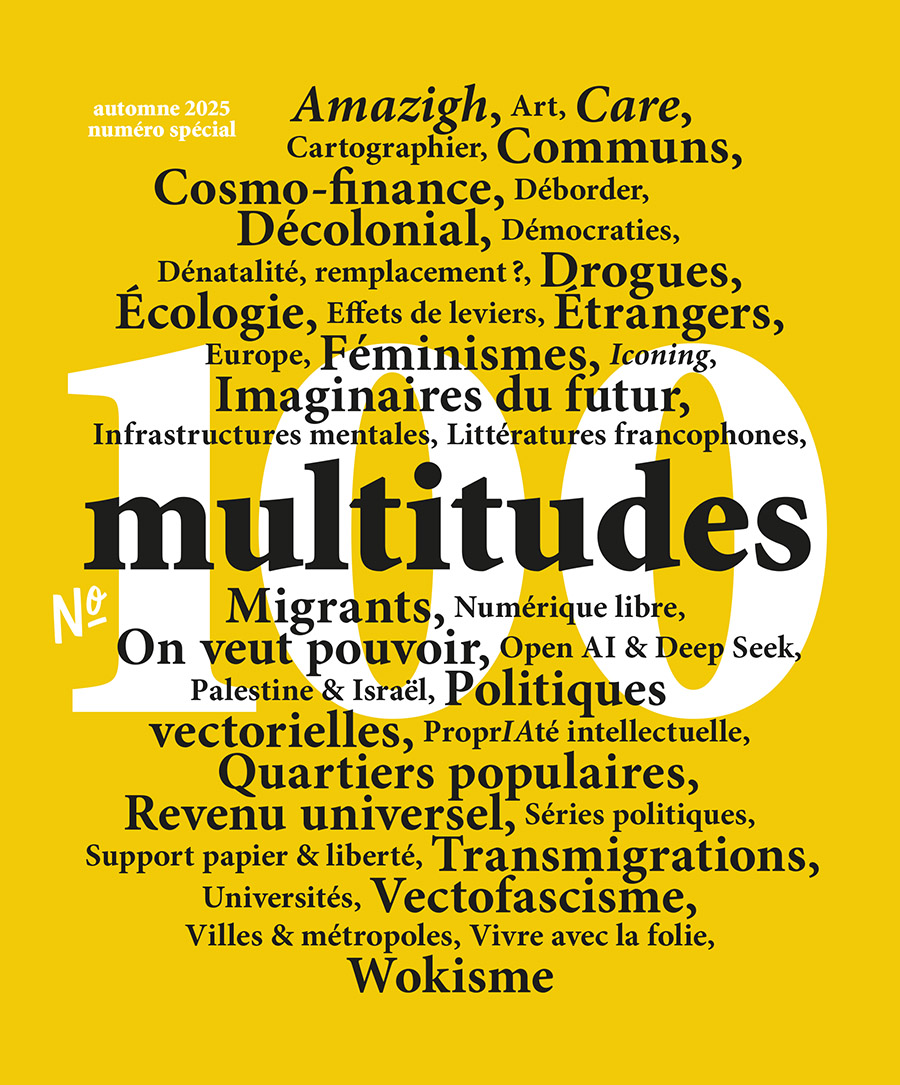La République islamique d’Iran
Entre survie économique et ambitions nucléaires, par Clément Therme et Gaëtane Lamarche-Vadel
La chute de la Maison Trump
Un point d’orgue au populisme ?, par Yann Moulier Boutang
Trump n’avait pas été réélu en novembre 2020. Il a laissé planer le doute sur son départ le 16 janvier, jusqu’au bout. Si 47 % des électeurs républicains ne croient pas que les élections ont été truquées, 48 %, une très courte majorité, donc pas loin de 35 millions d’électeurs, le croient eux, dur comme fer. Coup d’État pour un … Continuer la lecture de La chute de la Maison Trump
Un point d’orgue au populisme ? →
Le mythe de la charge maximale
Migrations mondiales et « capacité d’accueil » de l’État nation, par Michelle Ty
Marseille
Renouvellement intérieur et vassalisation extérieure, par Priscilla De Roo et César Centi
Mars attacks 4 juillet 2020. Après plusieurs coups de théâtre lors du « troisième tour » de scrutin pour la désignation du président du conseil municipal de Marseille, le Printemps marseillais finit par remporter la mise à une voix près, grâce au ralliement in extremis de Samia Ghali, dissidente du PS et sénatrice-maire des XVème/XVIème arrondissements de … Continuer la lecture de Marseille
Renouvellement intérieur et vassalisation extérieure →
Virage vert (ne pas s’abstenir), par Cora Novirus
Cette multiplicité de changements à observer est passée en fin de période par des élections municipales. Les esprits chagrins ont constaté que l’abstention avait atteint un taux record, signe de la désaffection des citoyens pour leurs représentants politiques : 59 % le plus fort taux depuis l’avènement de la Cinquième République. Pourtant des vaguelettes innombrables … Continuer la lecture de Virage vert (ne pas s’abstenir) →
Spatialités, par Cora Novirus
Dans la famille des Novirus, nous renaissons sans cesse, en différents endroits, pour suivre la propagation des virus. Nous les écoutons faire leurs plans. Voici ce que nous avons entendu Covid 19 dire récemment : Je suis spatialité. Pour incarner l’étymologie de mon prénom, j’ai décidé d’inverser les positions, de me mettre dans la peau du … Continuer la lecture de Spatialités →
Hégémonie, par Cora Novirus
En ces temps de pandémie, certains pays poursuivent tranquillement leur voie dictatoriale, enfermant leur population depuis des lustres – Turkménistan, Corée du Nord, etc. – et surenchérissant sur la clôture par souci extrême d’empêcher le virus de pénétrer sur leur territoire national. D’autres, comme la Birmanie, interdisent toute information et répriment journalistes et réseaux sociaux. En Inde, où … Continuer la lecture de Hégémonie →
Respiration, par Cora Novirus
Sauf les adeptes de quelques arts martiaux ou d’une quelconque technique de mindfulness obsédés par le souffle, nous passons notre vie à inspirer et expirer sans y prêter attention. Ce faisant, nous n’arrêtons pas d’injecter le monde extérieur dans nos poumons et notre sang, tout en émettant quelque chose de nous-mêmes dans ce qui nous … Continuer la lecture de Respiration →
Mondialisation, par Cora Novirus
Le virus a imposé la réalité d’une circulation mondiale en même temps que les ravages de la globalisation ultralibérale : tel est le constat largement partagé en cette fin d’année 2020 dans les milieux que je fréquente. Sauf que je m’interroge : serait-ce une raison, au nom des circuits courts qui ont si bon dos, … Continuer la lecture de Mondialisation →
Virus, par Cora Novirus
Ce virus m’a donné envie de lire le seul roman qui, à ma connaissance, a pris pour titre : Virus. Écrit par l’écrivain de science-fiction américain John Brunner, ce livre est sorti en 1973 aux États-Unis, et trois ans plus tard en France. Auteur du mythique Tous à Zanzibar en pleine folie contre-culturelle de la … Continuer la lecture de Virus →
Démesure infectieuse, par Cora Novirus
Médecin qui a travaillé en milieu tropical, Luc Périno parle de démesure infectieuse à propos d’une certaine manière nouvelle de soigner les maladies infectieuses, comme si toute la population devait être touchée, et comme si toute la population devait en mourir. C’est ainsi que nous a été présenté le Covid 19. Nous sommes en France plus … Continuer la lecture de Démesure infectieuse →
Taxe Pollen, par Cora Novirus
Que démontre « la suspension mondiale de l’activité » opérée au printemps 2020 pour contenir la contagion du Covid 19 ? Que d’autres logiques peuvent diriger l’économie que la course à la maximisation de l’accumulation du capital et à toujours plus de dividendes et de profits. Pour assurer – « quoi qu’il en coûte » – la santé … Continuer la lecture de Taxe Pollen →
Quoi qu’il en coûte, par Cora Novirus
J’ai entendu le président de la République Française dire, au début mars 2020 : « La santé n’a pas de prix. Le gouvernement mobilisera tous les moyens financiers nécessaires pour porter assistance, pour prendre en charge les malades, pour sauver des vies. Quoi qu’il en coûte ». Tout d’abord, je me suis frotté les yeux. Le … Continuer la lecture de Quoi qu’il en coûte →

